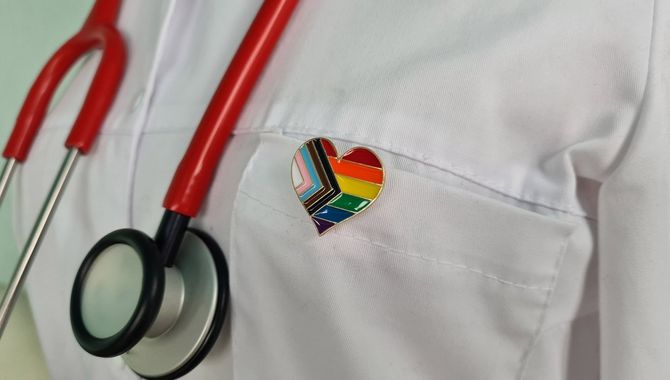If you’d like to enhance your knowledge of human physiology, anatomy, neuroscience, exercise science, or nutrition, a minor in human physiology may be what you’re looking for.
With the help of a departmental faculty advisor, you’ll plan a program of five courses to meet your objectives, starting with a strong foundation of prerequisite courses in the basic sciences and human biology.
You may use no more than two courses from another concentration to fulfill the requirements for a minor concentration (20 credit hours). You will be required to complete the two core courses (8 credits) and an additional three courses (12 credits) from the list below.
Core Courses
SAR HS369: Gross Human Anatomy
Integrative approach to the musculoskeletal, peripheral nervous, and circulatory systems of the human body. Regional approach is used to present lectures with the use of projected drawings, films, slides, and demonstrations. Weekly labs reinforce the lectures by a study of osteology, dissected cadavers, and live anatomy palpations. Either semester. (Credits: 4)
SAR HS370: Neuroanatomy and Neurophysiology
Lecture and laboratory related to the detailed study of development, morphology, internal configuration, and functions, and pathological deficits of the peripheral and central nervous system in humans. Spring semester only. (Credits: 4)
SAR HS 369 Prerequisites
CAS BI105: Introductory Biology for Health Sciences
Principles of biology; emphasis on cellular structure, genetics, microbiology, development, biochemistry, metabolism, and immunology. This course is appropriate for non-majors and students in the health and paramedical sciences (Sargent College). Students may not receive credit for CAS BI 105 if CAS BI 108 has already been passed. Three hours lecture, two hours lab. Carries natural science divisional credit (with lab) in CAS. Effective Fall 2018, this course fulfills a single unit in each of the following BU Hub areas: Scientific Inquiry I, Quantitative Reasoning I, Research and Information Literacy. (Credits: 4)
CAS BI108: Biology 2
For students planning to major in the natural sciences and for premedical students. Required for biology majors. It is strongly recommended students complete CAS CH 101 (or equivalent) before this course. High school biology is assumed. Biochemistry, cell & molecular biology, Mendelian & molecular genetics, physiology, and neurobiology. Three hours lecture, three hours lab. Carries natural science divisional credit (with lab) in CAS. Effective Fall 2018, this course fulfills a single unit in each of the following BU Hub areas: Scientific Inquiry II, Quantitative Reasoning II, Critical Thinking, Teamwork/Collaboration. (Credits: 4)
CAS BI210: Human Anatomy
Intensive preprofessional course for students whose programs require anatomy. Not for biology major or minor credit. Gross structure of the human body; skeletal, muscular, nervous, respiratory, circulatory, digestive, urinary, and reproductive systems. Three hours lecture, two hours lab (lab requires dissection). Carries natural science divisional credit (with lab) in CAS. Cannot be taken for credit in addition to the course with the same title formerly numbered CAS BI 106. Effective Spring 2020, this course fulfills a single unit in each of the following BU Hub areas: Scientific Inquiry I, Digital/Multimedia Expression, Creativity/Innovation. (Credits: 4)
CAS BI315: Systems Physiology
An introduction to physiological principles applied across all levels of organization (cell, tissue, organ system). Preparation for more advanced courses in physiology. Topics include homeostasis and neural, muscle, respiratory, cardiovascular, renal, endocrine, gastrointestinal, and metabolic physiology. Three hours lecture, three hours lab. Effective Fall 2019, this course fulfills a single unit in each of the following BU Hub areas: Scientific Inquiry II, Writing-Intensive Course, Critical Thinking, Teamwork/Collaboration. (Credits: 4)
CAS BI 211 or CAS BI 107
SAR HS 370 Prerequisites
CAS BI 211 or 315
SAR HS 369 (recommended)
Additional Courses
SAR HP252: Health and Disability Across the Lifespan
Overview of health development across the lifespan followed by an examination of common conditions that typically begin in certain stages. Each condition will be examined for its individual, group and systemic impacts. Effective Fall 2019, this course fulfills a single unit in the following BU Hub area: Writing-Intensive Course. (Credits: 4)
SAR HP353: Organization and Delivery of Health Care in the U.S.
The focus of this interdisciplinary course is on increasing the student's understanding of the health care system, the social, environmental, and behavioral factors that affect health care, and on increasing the student's ability to work in interdisciplinary teams. The student will actively engage in individual work, group discussion and teamwork through written, oral, and web site assignments. Effective Fall 2019, this course fulfills a single unit in the following BU Hub area: Writing-Intensive Course. (Credits: 4)
SAR HP565: Biomechanics of Human Movement
Biomechanics is a powerful tool for understanding why and how we control and coordinate movement in health and disability. The course provides a conceptual and theoretical basis of biomechanics so that students learn to creatively problem solve using a biomechanical thought process. Many examples of applications include athletics, orthopedic injuries, central nervous system disorders, designing assistive devices, pediatrics and aging. Emphasis will be placed on how to use the tools of biomechanics along with an understanding of functional anatomy to think about typical and abnormal movement. Effective Spring 2022, this course fulfills a single unit in the following BU Hub area: Creativity/Innovation. (Credits: 4)
SAR HS251: Human Nutrition Science
This course provides an introduction in the scientific foundations of nutrition and focuses on the relationship between diet and health. Scientific information is presented in preparation for discussion of macro- and micro nutrients and their role in human health and disease. (Credits: 4)
SAR HS281: Nutrition Throughout the Life Cycle
This course focuses on the changing nutritional requirements from infancy, childhood, and adolescence throughout the geriatric years. Nutritional needs specific to pregnancy and lactation will be discussed. Emphasis is placed on understanding the behavioral, socioeconomic, and cultural factors associated with meeting nutrition requirements throughout the life span. (Credits: 4)
SAR HS300: Epidemiology I
Examines the distribution of health and diseases across the population, and the factors that impact health. Which group of people is more likely to experience a heart attack or develop diabetes? Do our level of education, race or income impact our health and our life expectancy? This course studies how we approach understanding disease distribution within the population. Through in class presentations, real world examples, exercises and discussions students become proficient in research methods, disease screening, and infectious disease outbreak investigation. Effective Fall 2021, this course fulfills a single unit in each of the following BU Hub areas: Quantitative Reasoning II, Scientific Inquiry II. (Credits: 4)
SAR HS342: Exercise Physiology
What are the limits of human performance? Why can't we run 25 miles at the same speed we can sprint 40 yards? How do common diseases impact tolerance to physical activity? In exercise physiology we will discuss these questions and more, eventually uncovering principles that determine how our bodies respond to various forms of stress (like exercise). Through hands-on group experiments and collaborative projects in laboratory and lecture, we will also explore how scientists have come to these conclusions through the implementation of the scientific method in a research setting. Effective Fall 2019, this course fulfills a single unit in the following BU Hub areas: Scientific Inquiry II, Teamwork/Collaboration. (Credits: 4)
SAR HS375: Cardiovascular Pathophysiology
Overview of anatomy and physiology of the cardiovascular systems during normal and pathological conditions. This course will also cover pathophysiology of exercise performance in cardiovascular diseases, as well as adaptations to physical conditioning. (Credits: 4)
SAR HS550: Neural Systems
Exploration of mechanisms of signal transduction, communication, and integration in the nervous system. The approach is multidisciplinary, drawing upon fundamental concepts of the neuroanatomy, neurochemistry, and physiology of the nervous system. Lectures focus on patterns of processing in unimodal sensory, polymodal, motor, and limbic cortices. Methods used to investigate the nervous system are described and illustrated to facilitate comprehension of the current literature. (Credits: 4)
Note: You must have a GPA of 2.0 or higher to qualify for a minor in Human Physiology. You also must receive a grade of C or better in each course.




